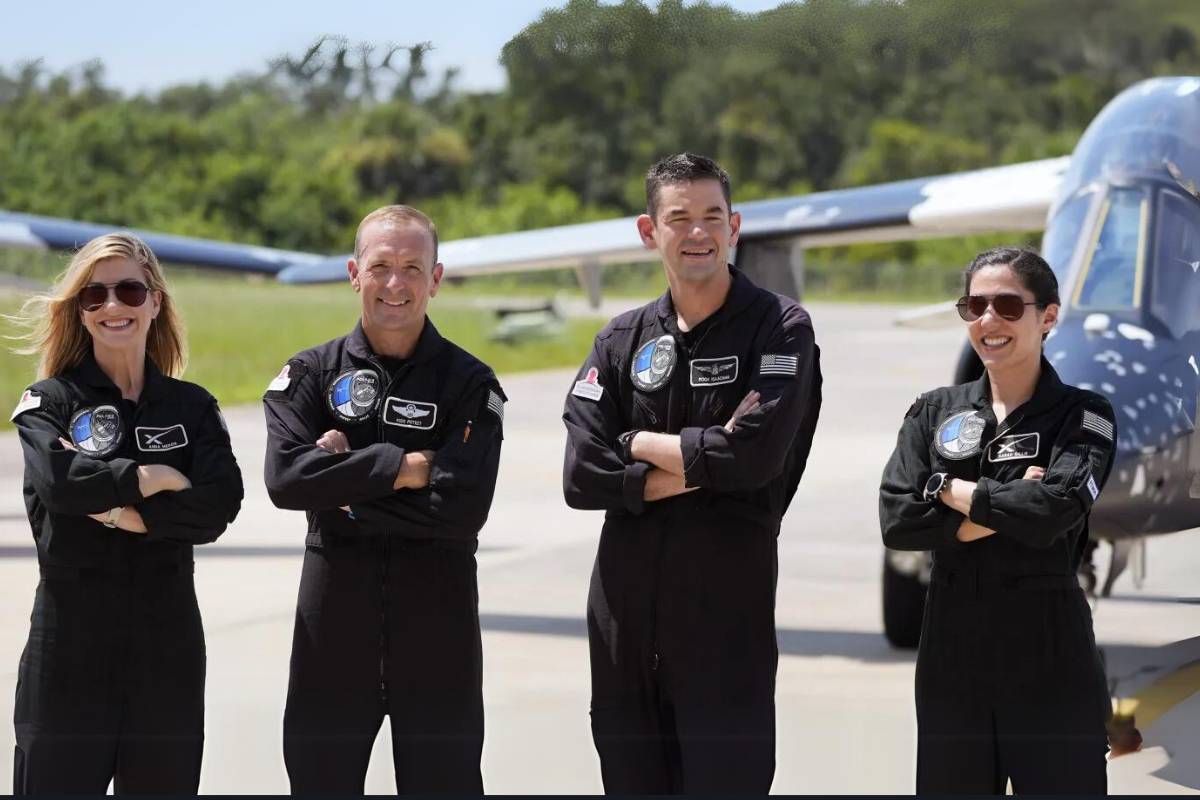Inside Jared Isaacman’s Historic SpaceX Spacewalk on Polaris Dawn Mission

In an event that feels like it belongs in science fiction, tech billionaire Jared Isaacman pulled off something no private citizen had ever done before: he took a walk in space. Yep, an actual spacewalk — not on behalf of NASA or any government agency, but as part of a private mission called Polaris Dawn. It’s a pretty big deal, not just for Jared Isaacman, but for the future of how we think about space exploration.
Table of Contents
ToggleThe Man Behind The Mission – Jared Isaacman
Jared Isaacman didn’t just fund the Polaris Dawn mission — he led it. Launched on September 10, 2024, from Kennedy Space Centre in Florida, the mission was built around pushing boundaries: testing new tech, conducting scientific research, and pulling off the first all-civilian spacewalk. The team? A blend of skill, grit, and experience.
Here’s The Crew Lineup:
- Jared Isaacman (Commander): Founder of Shift4 Payments, experienced pilot, and spaceflight enthusiast who’s quickly becoming a recognisable figure in the commercial space world.
- Scott “Kidd” Poteet (Pilot): A former Air Force Lieutenant Colonel with serious aviation credentials.
- Sarah Gillis (Operations Lead): One of SpaceX’s key minds when it comes to training astronauts.
- Anna Menon (Engineer): Focused on systems that keep people alive in space — basically, the kind of person you definitely want with you up there.
Each crew member brought something unique to the table, and together, they made history.
When The Cabin Goes Quiet
The spacewalk happened just two days after launch, on September 12. Jared Isaacman and Gillis stepped outside the Crew Dragon capsule, which had to be completely depressurised (because it doesn’t have a separate airlock). It was a short walk — just about 20 minutes — but it took place 450 miles above Earth. That’s higher than the Hubble, and the highest humans have been in orbit since the Apollo missions.
And get this: the new suits SpaceX developed for the mission than from conventional NASA suits weren’t just flashier. They were lighter, more flexible, and actually designed to handle a full vacuum environment. Jared Isaacman later said what really caught him off guard wasn’t the altitude or the view — it was how smoothly their life-support system performed.
Tech That Pushes Limits
Polaris Dawn wasn’t just about humans floating in space — it was a testbed for some pretty advanced systems:
- Spacesuits: Redesigned for better movement and less bulk.
- Life Support: A closed-loop system that ended up being about 15% more efficient than expected — not bad for something that had never been tested in a full vacuum before.
- Comms: Enhanced communications kept the crew in constant touch with mission control with barely any delay.
What They Studied Up There
Beyond the hardware, the mission also focused on research that could have long-term benefits — not just for astronauts, but potentially for healthcare down here on Earth.
- Weightlessness Effects: How does the human body really handle extended microgravity?
- Radiation Exposure: They measured it at altitudes higher than most satellites, and the results were actually better than expected.
- Space Medicine: The crew trialled new ways to diagnose and maybe even treat illness mid-mission, a crucial step for longer trips to places like Mars.
Back To Earth — With A Payload Of Data
The mission wrapped up on September 18. After reentry and recovery, the crew brought back a haul of over 500 gigabytes of data. That data is already influencing the design of their next mission, Polaris Freedom, scheduled for late 2025.
And in an interesting twist, NASA is now collaborating with Jared Isaacman’s team, using their biomedical findings to help train the Artemis astronauts who may eventually head back to the Moon. It’s the first official data-sharing deal between a government space agency and a private spaceflight team. That’s not just a partnership — it’s a paradigm shift.
What This Means For The Future
Polaris Dawn may have been one mission, but its ripple effects are already being felt. It’s a loud, clear signal that private companies are no longer just supporting players in space exploration — they’re becoming the main event. People like Jared Isaacman are turning ambition into action, and it’s working.
We’re looking at a future where trips to orbit — and maybe even to the Moon or Mars — won’t require a government badge. They’ll be booked by entrepreneurs, scientists, and maybe, one day, even tourists.
The Money Behind The Mission
Private space investment has already crossed into the tens of billions, and the growth shows no sign of slowing. According to The Space Report from 2025, the global space economy is expected to hit $1 trillion by 2040. Commercial missions like Polaris Dawn aren’t just pushing tech forward — they’re unlocking a whole new economic frontier.
Final Thoughts
Jared Isaacman’s spacewalk wasn’t just a personal achievement — it was a line in the sand. A signal that private citizens can do what only astronauts once could. And maybe, just maybe, it’s a sign that the stars are getting a little closer for the rest of us, too.
Published by Amanda Mills
I'm Amanda Mills, Senior Content Strategist, and I've been shaping digital marketing narratives since 2011. With a master’s degree in Digital Marketing and a bachelor’s in Media Studies, I specialize in blending creative storytelling with data-driven strategy to create content that not only engages but delivers results. View more posts







